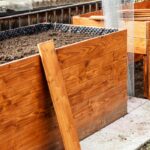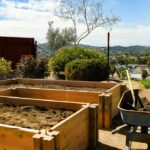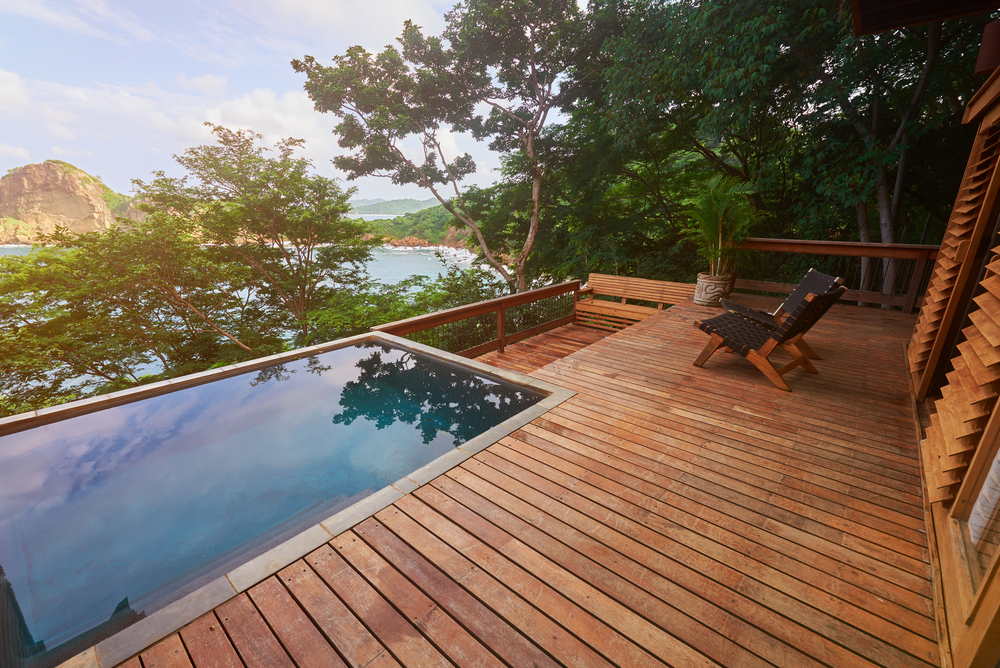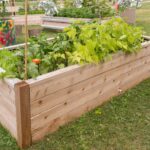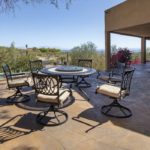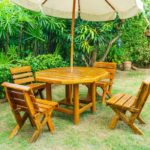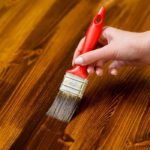Planting crops in raised garden beds has become quite a trend among gardeners today, and rightfully so. They help prevent soil erosion, are easier to maintain, and you can grow nearly anything in them, making them better than in-ground gardens.
The best wood for raised beds is not chemically contaminated and is mildew and rot-resistant. Some of the best types of wood for raised beds include cedar, redwood, cypress, juniper, chestnut, and black walnut. Avoid pressure-treated (pre-2004) and recycled/reclaimed wood.
While a raised garden can be made using different materials, wood is the most common option. But what kind of wood is the best for raised garden beds? Let’s look at the factors you should consider when choosing from the different types of wood, along with their pros and cons.
What’s the Best Type of Wood for Raised Garden Beds?
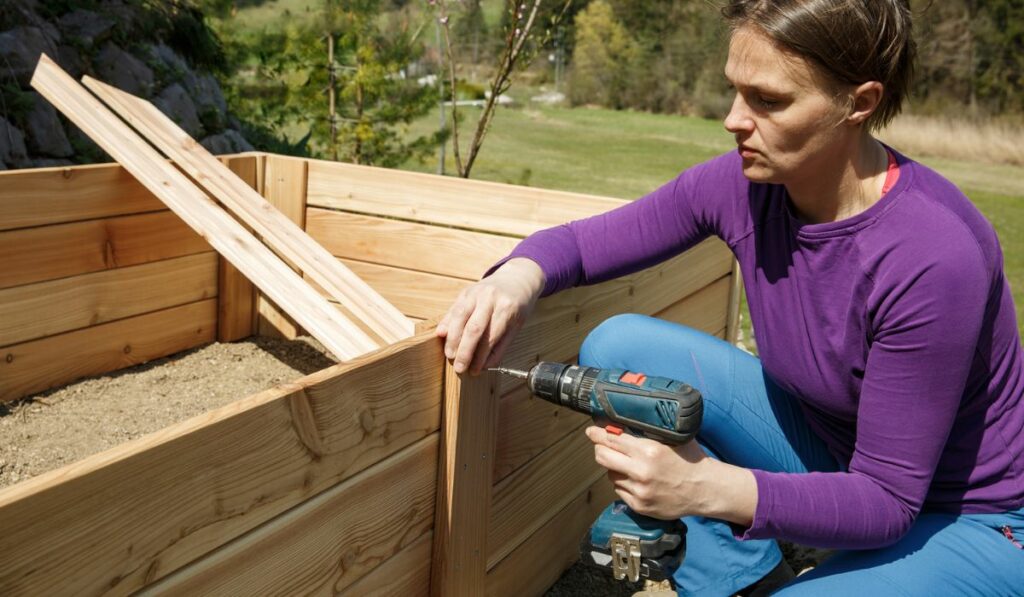
When choosing the best wood for raised beds, you must choose something that prevents chemical contamination. It should also be rot and mildew-resistant so that it lasts for years.
Cedarwood and redwood are two of the most long-lasting options, but they’re expensive. Meanwhile, pine is cheaper but doesn’t last long. Other great options include juniper, yew, chestnut, hemlock, cypress, catalpa, black walnut, black locust, Douglas fir, and white oak. More on these later.
What Factors Should Be Considered When Choosing a Wood?
To make sure you choose the right wood, keep the following factors in mind.
Durability
If you’re only installing a raised bed for a little while at a rental property, you don’t need to worry too much about durability. This is because most kinds of wood will last up to 3-4 years before they succumb to rot.
However, if you’re looking for something more long-term, you should opt for a type of wood that’s more pest and rot-resistant. One good option is cedar, which can last for nearly a decade before it starts breaking down.
Safety
Choosing the right wood is essential to avoid contaminating your home-grown fruits and vegetables. This is why you should stay far away from pressure-treated and reclaimed wood, such as old railroad tires and shipping pallets.
Pest-resistant woods like redwood and cedar are ideal for vegetable gardens since they don’t contain chemicals that can harm you if ingested.
Cost
Cheaper kinds of wood don’t last long as more expensive options. If you want to install a raised bed in your garden for the long term, you should invest more in materials, but if it’s only for the short term (for a rental property, for instance), a cheaper material will also suffice.
FSC certification
FSC (Forest Stewardship Council) is a global organization focusing on forest conservation via certifications and inspections. Forests certified by FSC pass international forest management standards, ensuring that forestry practices follow socio-economic and environmental standards.
The Best Types of Wood for Raised Beds and Their Pros/Cons
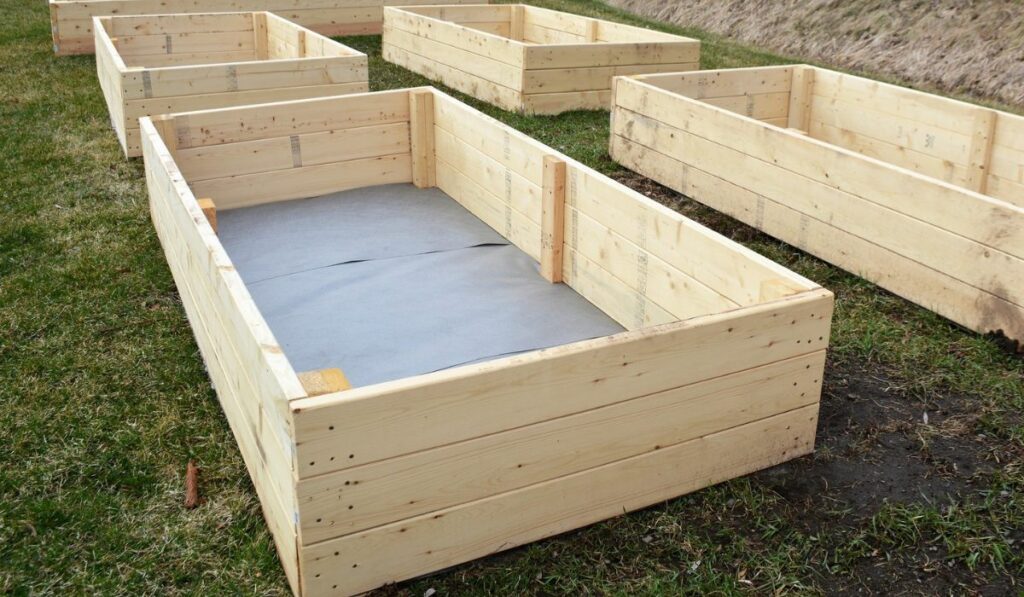
We’ve already mentioned some of the best wood for raised garden beds above. Let’s look at them in more detail.
Cedar
One of the best options for raised beds is cedar, mainly Alaskan Yellow and Western Red cedar. Cedar improves with age and eventually becomes a beautiful gray/silver color, giving your garden bed a new look. It is also quite strong and can easily last for years.
Pros
- Naturally rot and insect-resistant containing natural oil that protects it from insect attacks and decay.
- Quite attractive and gets a beautiful finish with time.
- Very stable and durable.
Cons
- Expensive and requires quite a lot of maintenance.
- Since it’s a softwood, it’s not as strong as hardwoods.
Redwood
Another popular option is redwood, especially since garden beds made out of these are of high quality and last for over a decade. In addition, since redwood has a higher amount of tannin than cedar, it lasts longer.
Pros
- Naturally decay, rot, and termite-resistant and can withstand weathering and insect attacks.
- Beds can last for up to 20 years.
- Despite being a softwood, natural tannins make it highly durable.
Cons
- Requires proper finishing since it’s a softwood.
- Expensive and high maintenance.
Pine
Pine is a softwood with an attractive wood grain, making it a good option for raised beds. It also has other unique characteristics like stability and ease of use, making it a suitable choice.
Pros
- Most people opt for pine because of how affordable it is.
- Suitable for most outdoor woodworking projects.
- Has high dimensional stability and can keep the bed frame steady for drilling, sanding, and screwing.
- Takes manipulation with a saw and lather quite well, making it suitable for beginners.
Cons
- Less resistant to rot and moisture.
- Susceptible to insects and pests.
- Requires sealing and finishing.
- Lasts for 7-10 years.
Juniper
Juniper, particularly rustic-looking juniper, is great for garden beds. In fact, it’s excellent for almost all outdoor woodworking projects because of its durability and strength. Plus, it has nearly all the properties of both redwood and cedar, but it’s less expensive.
Pros
- Like redwood and cedar, juniper’s naturally produced oils prevent rot.
- Helps protect ecosystems since the natural oil eventually leeches into the soil and acts as a fertilizer.
- Affordable.
Cons
- Not as durable and doesn’t last for more than a decade.
- Tough to cut & hard to fit the different pieces together without any gap in between.
Chestnut
Another long-lasting wood that you can use for raised garden beds is chestnut. Its straight-grain texture is beautiful and can be used for different woodworking purposes. In addition, this is high rot resistance, and this high-density hardwood is considered one of the finest-quality wood.
Pros
- Tannins in chestnut protect it from insects, rot, and weather attacks.
- Easy to work with chestnut since it can easily handle nails and glue, making it suitable for even beginners.
- The unique rustic appearance and texture and the beautiful light or dark-brown color make a chestnut bed a great addition to your garden.
Cons
- You need to be a little careful when working with it since it tends to split easily.
- Not readily available.
Yew
Yew is another long-lasting wood that’s also good for garden beds. It’s durable and hard and typically used for different commercial purposes.
Pros
- Straight-grain wood with a nice orange-brown color.
- Uniform texture adds to the beauty of your garden.
- Very durable; can withstand wear and tear and stress.
- Lasts for 10-20 years easily.
- Rot and insect-resistant, and a great option for humid areas.
Cons
- Toxic and can irritate the skin and eyes and cause respiratory problems.
- The wood’s oily surface can affect the finish.
Cypress
What makes cypress different from other kinds of wood used to make raised garden beds is that it adds a bit of rustic elegance to your garden. Like redwood and cedar, cypress is also considered a premium wood with many great qualities but without the high cost.
Pros
- Naturally rot-resistant and contains natural oil that protects it from various outdoor elements.
- Good weather, insect, and pest resistance so cypress beds can last for over a decade.
- Working with it is easy since it can easily handle sanding, gluing, and nailing (good for beginners).
- Takes little effort to make a beautifully finished raised bed.
- Good finishing qualities—paints and stains hold well.
Cons
- Has an unpleasant odor.
- Toxic; wear masks and gloves when using it.
Black Locust
This dense wood with great strength and other exceptional qualities makes it an excellent option for raised beds.
Pros
- Since it is a dense hardwood, it’s highly durable.
- Resistant to environmental elements like insects, humidity, and moisture, so garden beds can last up to 2-3 decades.
- Flavonoids and taxifolin in wood prevent rot and keep insects at bay.
- Since it’s rich in calcium oxalate, it’s decay-resistant.
Cons
- A little hard to work with, so not the best choice for beginners.
What Types of Wood Should Be Avoided for Raised Beds?
While being sustainable and upcycling and recycling are all the rage these days, you should be very careful when there’s food involved. If you upcycle and choose the wrong kind of wood, chemicals can leach into your food and ultimately harm you. Some types of wood you should avoid are:
Utility Poles & Railroad Tires
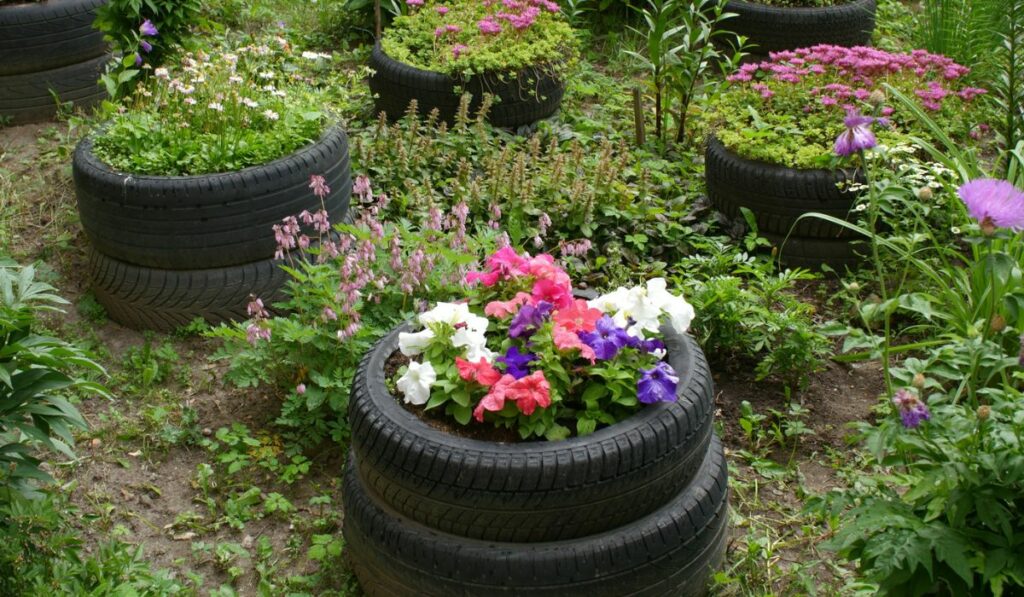
Both of these have been popular options among gardeners because of their availability and sturdiness. However, chemicals used for treating the wood will easily leach into the soil. And since both utility poles and railroad ties are treated with creosote, you should avoid using them for your crops.
Creosote is a tar-like compound commonly used for industrial wooden structures to protect them from fungi and insects. Unfortunately, it has often been linked to cancer and is toxic for many plants, so there’s no point in using creosote-treated wood.
Flowers might be able to grow and fare better in creosote-treated wood, but it’s generally best to avoid it altogether.
Recycled/Reclaimed Wood
Another common option is reclaimed or recycled wood since it’s eco-friendly and economical, but if you have no idea about its origin, you should completely avoid using it.
Whatever stain or finish was used to treat the piece of wood will leach into your soil, and if you don’t know the wood’s origin, it’ll be impossible to know the chemicals that might be lingering on it.
Penta or pentachlorophenol is a common preservative used for both residential and industrial lumber and was widely used on foundation pilings, laminated timbers, and fence posts. So even though it’s now used as a restricted pesticide, your wood might be subjected to it.
So if you don’t know the origin, age, and treatment of your recycled wood, don’t use it for your raised bed.
Pressure-Treated Recycled Wood
You should also avoid using recycled wood that was pressure-treated before 2004.
Before 2004, CCA (chromated copper arsenate) was used to treat wood for residential projects such as raised gardens, play structures, and decks. However, it was later found that CCA-treated wood leached arsenic into the soil. Plus, arsenic began accumulating in plants such as lettuce, tomatoes, and onions.
In 2003, EPA banned CCA-treated woods. So if the wood you have came from a residential structure like a deck or fence from before 2004, it’s not safe to use.
Can You Use Pressure-Treated Wood for Raised Beds?
Lumber is pressure-treated to make it more decay and rot-resistant. The chemicals used on the wood repel bacteria, insects, fungi, and other things that find the garden environment hospitable. If left untreated, wood can decay within a few months of use, depending on the quality and type.
Since CCA is banned, preservatives like ACQ and CA are now used to treat residential lumber. Both compounds are safe to use in vegetable gardens. However, if the chemicals were cosmetically applied to the surface of the wood, then the wooden structure shouldn’t come into direct contact with the soil.
If wood is truly pressure-treated, the chemicals are equally distributed across the wood. You’ll also see a label that tells you it’s safe for ground contact. There are other benefits of pressure-treated lumber. It’s long-lasting, widely available, and relatively more economical than other hardier options.
Organic growers can’t use pressure-treated wood since it goes against the USDA Organic guidelines.

